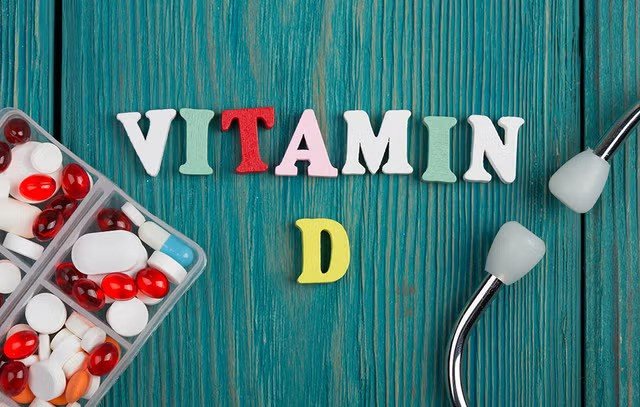Vitamin D, often called the “sunshine vitamin,” plays a crucial role in maintaining strong bones, supporting immune function, regulating mood, and aiding calcium absorption. However, despite its importance, vitamin D deficiency is surprisingly common worldwide. Modern lifestyles, limited sun exposure, dietary gaps, and certain medical conditions have made vitamin D deficiency a silent but widespread concern.
But how do you know if you need a vitamin D test? Is it necessary for everyone? This article will help you understand who should consider testing, the symptoms to watch out for, and what to expect from the process.
What Is a Vitamin D Test?
A vitamin D test measures the level of 25-hydroxyvitamin D [25(OH)D] in your blood. This is the most accurate indicator of your vitamin D status. It is usually done via a simple blood draw and analyzed in a lab. The results indicate whether your vitamin D levels are sufficient, insufficient, or deficient.
In some cases, doctors may also test for 1,25-dihydroxyvitamin D [1,25(OH)₂D], but this is typically reserved for specific conditions related to kidney function or parathyroid disorders.
Common Signs You Might Need a Vitamin D Test
Many symptoms of vitamin D deficiency are subtle or overlap with other health issues, which makes it harder to detect without testing. However, here are some key signs and symptoms that may indicate low vitamin D levels:
- Persistent fatigue and low energy
- Frequent colds or infections
- Bone or muscle pain
- Slow wound healing
- Mood changes, especially depression or anxiety
- Hair thinning or hair loss
- Unexplained back or joint pain
- Muscle weakness, especially in older adults
If you experience any of these symptoms consistently, it might be wise to get your vitamin D levels checked.
Who Is at Higher Risk of Vitamin D Deficiency?
Not everyone needs routine vitamin D testing. However, certain groups are more likely to develop a deficiency due to lifestyle, health conditions, or biological factors. You may need a test if you fall into one or more of the following categories:
1. Limited Sun Exposure
People who spend most of their time indoors, use sunscreen diligently, or live in areas with long winters and limited sunlight may not get enough UVB rays needed to synthesize vitamin D.
2. Darker Skin Tone
Melanin reduces the skin’s ability to produce vitamin D from sunlight. People with darker skin may need longer sun exposure and are more prone to deficiency.
3. Elderly Individuals
As we age, the skin becomes less efficient at producing vitamin D. Additionally, older adults often spend less time outdoors and may have poor dietary intake.
4. Obesity or High Body Fat
Vitamin D is fat-soluble, meaning it gets stored in body fat. People with obesity may have lower circulating vitamin D levels despite adequate intake.
5. Certain Medical Conditions
Chronic kidney or liver disease, Crohn’s disease, celiac disease, and other malabsorption syndromes can impair vitamin D absorption or metabolism.
6. Breastfed Infants
Breast milk typically doesn’t provide enough vitamin D, and infants who aren’t given supplements may be at risk unless they get sufficient sun exposure.
7. People Taking Specific Medications
Long-term use of corticosteroids, anticonvulsants, and weight-loss drugs may reduce vitamin D levels in the body.
Benefits of Getting a Vitamin D Test
Knowing your vitamin D status offers several health benefits. These include:
- Targeted Supplementation: Instead of guessing your dosage, your doctor can recommend the right amount of vitamin D based on your test results.
- Preventing Health Issues: Timely diagnosis and treatment can prevent complications like osteoporosis, rickets in children, weakened immunity, and cardiovascular issues.
- Tracking Medical Conditions: If you have a condition like osteoporosis or chronic kidney disease, regular vitamin D monitoring is often part of disease management.
- Improved Mood and Energy: Addressing a deficiency can significantly improve mental health and energy levels in many people.
How to Get Tested for Vitamin D
A vitamin D test is simple and widely available. You can get tested by:
- Visiting a doctor: Your healthcare provider may order a blood test based on your symptoms or risk profile.
- Using a diagnostic lab: You can book the test directly through certified labs, many of which offer home sampling services.
- Opting for at-home test kits: Some companies offer finger-prick kits you can mail in for analysis.
Be sure to consult your doctor before starting high-dose supplements based on results from home kits.
What Do Your Test Results Mean?
Here’s a general breakdown of 25(OH)D blood levels:
- Below 20 ng/mL: Deficient
- 20–29 ng/mL: Insufficient
- 30–100 ng/mL: Optimal
- Above 100 ng/mL: Potentially toxic
Treatment may involve oral supplements (Vitamin D2 or D3), lifestyle changes, and increased safe sun exposure, depending on your levels.
Instantly Book Your Lab Test at HR Diagnostic Via Instacare
When Should You Retest?
If you’re found to be deficient and start treatment, your doctor may recommend retesting in 8–12 weeks to monitor progress. Individuals with chronic conditions may need periodic checks to maintain optimal levels.
Conclusion
Vitamin D plays a crucial role in nearly every system of the body, and being deficient can impact your health in subtle but serious ways. While not everyone needs routine testing, individuals with symptoms or belonging to high-risk groups should seriously consider it. A simple blood test can provide valuable insight into your health and guide effective treatment.
If you suspect a deficiency or fall into one of the at-risk categories, don’t ignore the signs. Early detection through a vitamin D test can make a lasting difference in your health and quality of life.
